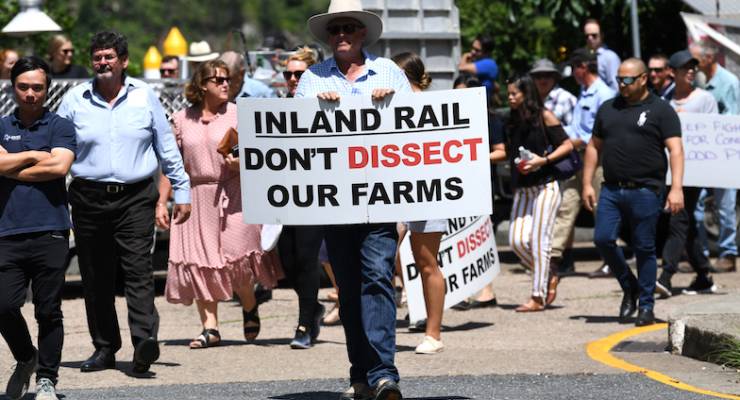
We’re now well into budget-drop season, and infrastructure spending is being heavily touted as a key element in our road to recovery. Or, as Michael Pascoe correctly notes, infrastructure spending announcements are being touted but this may not actually mean any more spending.
The economic benefits of any mooted budget increase in infrastructure funding are likely to be undermined by one of the perennial problems of Australian politics: National Party pork-barrelling, favours for mates and rorting.
Total government spending on infrastructure — by all levels of government, not just the Commonwealth — has fallen by around 15% over the past two years, despite major projects going ahead in Sydney and Melbourne. An increase of investment back to 2018 levels would see an additional $15 billion a quarter injected into the economy nationally. That’s the least the government could do in the budget.
That will have direct and indirect benefits in terms of jobs in heavy construction and building supply manufacturing, but infrastructure should also yield an ongoing benefit to the economy from increased economic opportunities, lower transport costs, reduced transit times and increased output and exports.
That sounds obvious, but it hasn’t always informed government policy.
The extraordinarily expensive — $10 billion — inland rail line being constructed by the federal government will be the biggest white elephant since the Howard government built the little-used Alice Springs-Darwin line. Even by the government’s own studies it will barely earn a profit on its operating costs — let alone recoup the billions being wasted on it.
Indeed, the line is best understood as yet another subsidy to the Coalition’s friends in the coal sector. The business case for the line is dependent on an expansion in thermal coal exports, and its pricing structure will be designed “to maximise volume of coal that can be accommodated within the assumed cap of 87 coal train paths”.
Taxpayers will miss out on $450 million in revenue because of this subsidy to the Coalition’s fossil fuel sector donors.
Only problem is, thermal coal’s market share is collapsing and miners are shutting coalmines.
The inland rail is only the most extreme example of the toxic role the National Party plays in distorting infrastructure investment decisions — often in the form of actually rorting infrastructure programs for its political self-interest.
If the government does end up increasing infrastructure investment significantly, Australia may be left with a multibillion-dollar legacy of low-performance, low-productivity infrastructure that has to be maintained but which will never repay its costs or provide the community with benefits.
The only truly safe way to allocate infrastructure spending is to remove politicians entirely from the process of infrastructure investment. Infrastructure Australia — the independent investment advisory body created by Anthony Albanese a decade ago — could be turned into a fully fledged infrastructure version of the Reserve Bank, with the independence, funding and remit to invest in projects based on benefit-cost ratio alone, and the goal of ensuring Australia has a steady pipeline of infrastructure projects — large, medium and small — in train.
With the economy depending on a huge input of fiscal stimulus, more than ever infrastructure spending is too important to be left to the politicians.








Alternatively, we could have representatives who act with honesty, integrity and humility and who rely on disinterested expert advice in making these decision.
“A related question is: should departments be in charge of infrastructure investments? Answer yes if you don’t mind your tax going to waste.“
Funny how yesterday’s wasteful pink batts and school halls become today’s infrastructure investment under the watchful eye of the voting public’s preferred economic managers. Just like a miracle!
Except that from Abbott onwards this mob choose to not take any notice of Infrastructure Australia’s expert information.
“The only truly safe way to allocate infrastructure spending is to remove politicians entirely from the process of infrastructure investment.”
Not necessarily, according to the Audit Office.
But the purchase of land near the proposed new Sydney airport was authorised by bureaucrats, so where do we find the correct overseer?